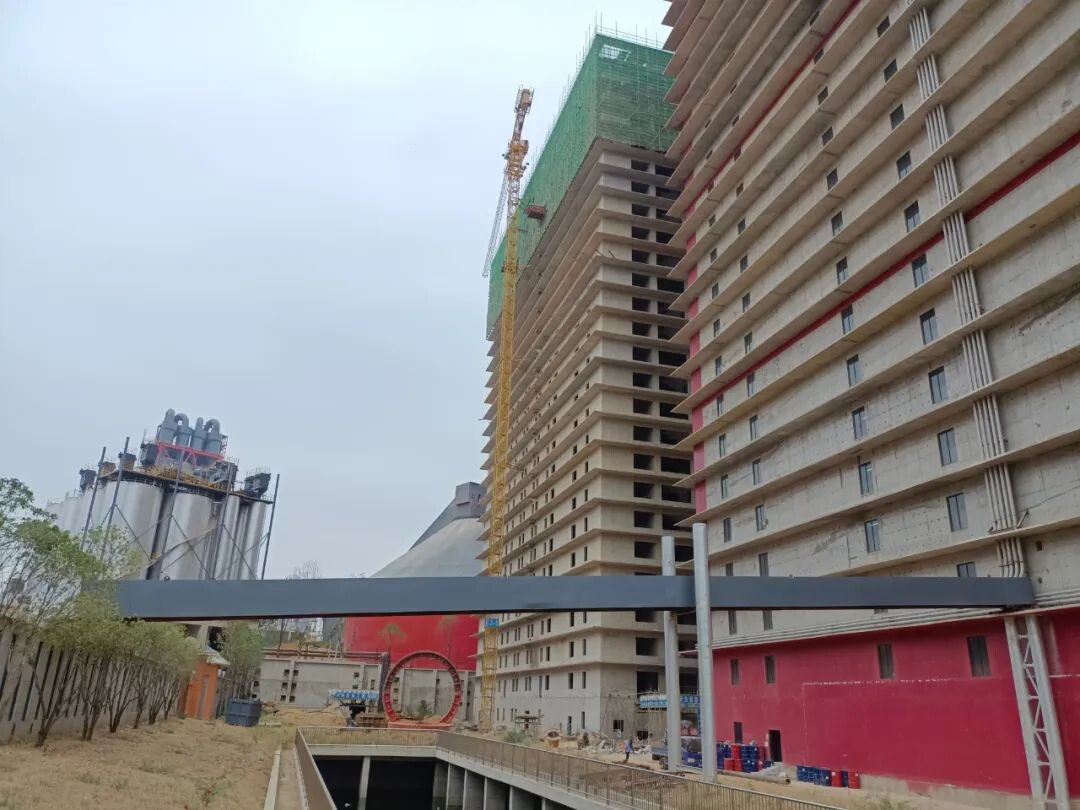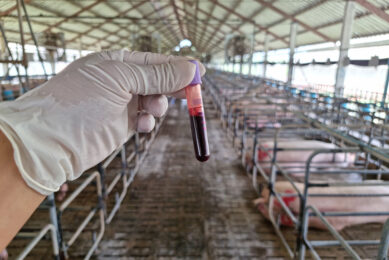Under construction: A 26-storey pig house

In recent months, various websites have reported about a 26-story hog farm facility. This was taken into use in Ezhou, Hubei province, China. In the ongoing trend to build multi-storey pig houses, it surely must be one of the largest. Pig Progress took a deep dive. What is new so far?
The pig complex, once completed, is an ambitious adventure comprising 2 buildings measuring 26 floors, each measuring 400,000 m2. Owner of the project is Hubei Zhongxin Kaiwei Modern Animal Husbandry, which reports about its project on its WeChat account. Major shareholder of the corporation is a local cement producer, and heat generated from the cement factory will also be used to heat the farm. The project is one of China’s most modern pig breeding farms. It boasts labour efficiency, green ecology, and lower comprehensive cost.

1.2 million slaughter pigs per year in 26-storey pig house
The city of Ezhou is located at roughly 80 km south east of Wuhan. The complex will eventually be able to produce 1.2 million slaughter pigs/year (leading to 108,000 tonnes pork/year), whilst the investment costs allegedly were about RMB 4 billion (€ 570 million).
Cooperation agreement for purchasing pigs
On August 31, 2022, Zhongxin Kaiwei and Jiahe Agriculture and Animal Husbandry signed a cooperation agreement for purchasing pigs to start stocking one building of the finalised complex. Zhongxin Kaiwei will introduce 21,600 sows and 55 boars from Guangdong-based supplier KingSino.

Underground pig-catch channels
According to the contract requirements, the pigs now stay at bases in Miluo and Jin. The animals are delivered in 4 batches between 25 September and 30 November of this year. The animals will go into the buildings via underground ‘pig-catch channels.’ They will then go to their designated floors by one of the 6 forty-tonne load pig elevators.
Feed and drinking water
The animals will go to the first of the 2 26-storey buildings, which is already completed. The second building is now under construction. The idea is that in each building the first 2 floors will be used for functional purposes – like e.g. feed supply. As from the third floor upward, each floor will function like a farm, with 1,000 sows per floor and a production capacity of 25,000 slaughter pigs/year. With 48 producing floors in total, that leads to 1.2 million slaughter pigs/year.

More than 30,000 control points
Chinese pig news sources describe how the central control room on the first floor formulates the feed and drinking water for each floor. Indicators of temperature, environmental humidity, toxic gas concentration are controlled in real-time. There are more than 30,000 control points which determine the precise feeding of each pig. Huge pipelines supply water and materials to pigs on each floor.
Biogas-based waste treatment system
A flushing system serves to disposed of pig waste. The media sources explained how a comprehensive biogas-based waste treatment system then converts pig manure into clean energy for electricity generation and heating. Manure enters the high-temperature anaerobic fermentation system tank, which reduces the evaporation of odorous gases by more than 90%.

Round-the-clock veterinary supervision
Veterinarians supervise the complex around the clock. Zhongxin Kaiwei is also still actively recruiting additional veterinarians, breeding managers, farm managers, and technicians to staff the Ezhou farm.
Chinese pork demand will increase
China’s demand to pork is projected to increase from 51.77 million tonnes to 60.77 million tonnes in the next decade, according to official estimates. Building large farms like these is one way of meeting the rising demand.
This article was omposed with kind assistance of Allen Shu, correspondent.
 Beheer
Beheer








 WP Admin
WP Admin  Bewerk bericht
Bewerk bericht